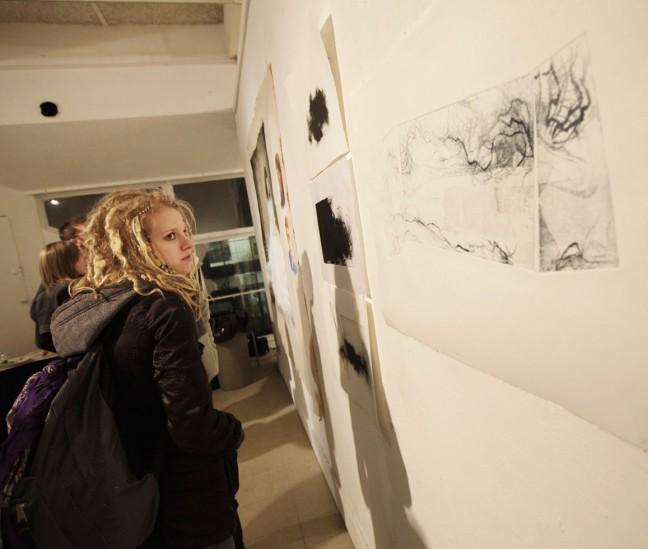A continuation of the ‘Mickey Mouse Degrees’ series, the nickname is a pejorative for disciplines that many people dismiss as “useless” in the job market.
This attitude affects academic support available for people in these majors and can be very invalidating for people pursuing their passions.
Callum White is a sophomore earning an Arts B.S. degree. In this interview, we’ll dive into the life of a fine arts major with a focus on illustration and glass blowing.
What are some common perceptions about art students?
White reported that although there are many different stereotypes, the biggest one he has heard is the “lazy artist.” It’s a common assumption that art is less time consuming unlike fields such as engineering.
He noted that comments such as “we should trade homework” are very frequent. This is due to the lack of public understanding of how much work is involved in art projects. In contrast, he said people are usually very interested when he talks about his field of study, often asking to see his work.
“Honestly, telling people I’m an art major helps with making friends because it’s so bizarre,” White said.
What work goes into being an artist? What are some challenges specific to this field of study?
White said that time management is a big issue with art. On some projects, he works over 20 hours to make something look right, especially with 2D art.
The process involves painstaking attention to detail in order to create the appearance of dimensionality on a flat surface, using mediums such as graphite, charcoal or ink.
Rather than exams, large portions of semester grades come from projects. Some classes involve just one project that you spend the entire semester — or multiple semesters if a student retakes the course — working on.
Others assign as many as one project every week or two. Because art students often have multiple projects at once, managing classes while taking care of oneself can become challenging, especially around deadline/midterm season.
Is safety a big concern in the field of art?
White recalled times he would get burned while working in glass lab. Horror stories of serious injuries while working with cutting instruments in wood shops or glass furnaces are all too common. But White noted that even small tasks can cause harm.
“Even just drawing can be difficult sometimes,” White said. “When my hand starts to hurt, or from poor posture, my back gets in pain. While these seem small they really build up throughout long days and semesters.”
How are grades decided for art majors at the University of Wisconsin? What are some challenging courses you are taking?
According to White, grading is very “subjective” within art and based on individual professors’ preferences.
Some professors look for things like effort and improvement, rather than the work itself. Others are much more specific, looking for mastery of specific techniques, making grading very difficult.
With that said, due to the subjective nature of grading and work expected, the assumption is that a higher number of credits and course level signifies a more difficult course load.
What does a day in your life look like?
White took 7 different studio courses this year, which is more than what is typical for an art student. Usually, he goes to his classes, then has one 2.5 hour studio course a day. But some days he will work in studio for upwards of five consecutive hours.
UPDATED: UW adopts Pass/Fail option in response to COVID-19, online classes
When asked about ways the university can support art students, he said because the department is so small, there aren’t many things they can do besides providing them with funding.
Art is an expensive field when it comes to keeping materials in stock and equipment maintained. On top of that, art students pay for most of their supplies — such as notebooks, paper and pencils among other things — out of pocket.
White’s more challenging classes right now are glass blowing and comics. These prove to be challenging due to time requirements, but he is passionate about his work and enjoys his projects.


